Back to trash-hacking main index
The Lock-plate Savonius
A Savonius is a drag-based VAWT that was invented yada yada yada,
blah blah blah, go here.
This is an interesting modular implementation for hobbyists or prototypers
using plastic soda bottles and those microwavable lock-together plastic
disposable plates you can get off the shelf at the supermarket for a few
bucks for a pack of 20.
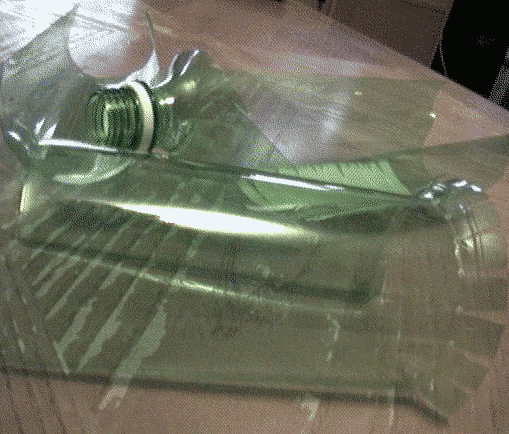
First I cut half of the outside off a bunch of soda bottles to act as the
blades. These sections already end up having a preference to curve at
about the right arc. I cut several vertical flaps in the top and bottom
to use to attach these parts to the plate. As much accuracy as can be
had is for the best here -- otherwise the unit ends up with quite a wobble
and imbalance. They are used in pairs, so I tried to match up pairs that
were as close to identical as possible.
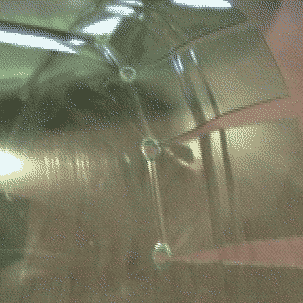
Note before cutting the flaps I melted little holes through -- this
discourages tearing at the end of the cut. I of course was in a well
ventilated area at the time.

Next I printed out the following pattern on a laser printer -- which is
much easier than trying to use a ruler. I punched little holes through
the pattern so I could mark through it with a felt-tip pen, and then carefully
and precisely taped the pattern to one of the plates and marked it. Of course,
the pattern is flipped over in reverse for the plate on the opposing side.
In this case I'm trying out a variant blade with an air-channel in-between.
Some people claim these are better, but I've seen no solid data. A normal
blade would make a continuous "S" shape.
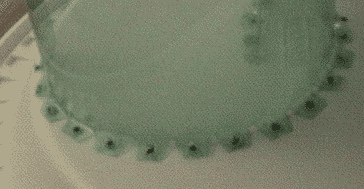
Then, again in a well ventilated area, I tempted fate and managed to use a
hot pen to punch through each tab while applying pressure to get the blades
flush against the plate. The plastic melts together and creates a binding
that's good enough to hold everything in place temporarily. This requires
some level of presence of mind and skill at not burning yourself or
accidentally melting into the unit while fussing around to get the blades
lined up with the pattern. The second plate is harder due to constrained
elbow-room -- err I suppose that's "knuckle-room" in this case. Having
translucent plates would have sure helped here.
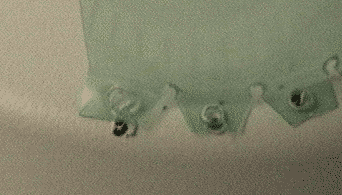
Note after a bit of testing that the most of the stress ends up on the end
tab. I didn't have any, but if I did I'd put a pop-rivet in on each end tab.

For a bit more lasting seal I used some silicon tub sealer forcing it through
the holes and squashing it on both sides. This also waterproofs the unit.
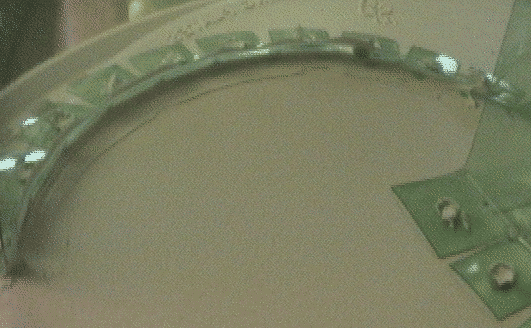
I also sealed along the bases of the blades to make them airtight. Not
that I expect that really is very critical.

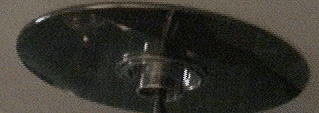
To construct the end-peices I codged together some flanges from 3.5" hard
drives (minus magnets.) (5.25" would be even better.) The plates are
peirced in the middle and sandwiched between two disk platters which holds
them tight and makes them more rigid. Less give here is good to prevent the
whole stack from bending too much. CDs may also be rigid enough to work here.
The genset attached to the top is a stepper motor from a bubblejet printer.
I think this one was from the traction feed, but the head motor would likely
work well, too.
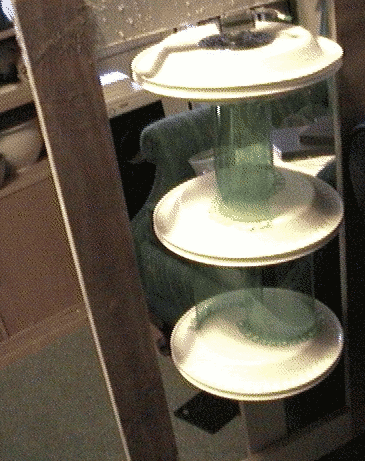
Finally I whipped together a quicky temporary support frame for a test
deployment in the yard. Eventually I hope to build a shroud like Terra
Moya Aqua has been playing with to see how well it works. Plus something to
keep the water off the genset would be real nice...

With a two-stack design the unit could spin the motor when near a house-fan
on medium, and light a LED pretty brightly on high. The beauty of this
little trash hack is that the bladesets can be rearranged, rotated and stacked
as high as you can get to be stable. I haven't found the need yet to
permanantly glue the lock-plates together.
I found that due to the unavoidable 60-degree offset between consecutive
segments of a three-blade system it rocked too much in the middle section,
but a four-blade system with 180 degree turns or a 5-blade with 144 degree
turns might be more rigid. Likely anything beyond seven or eight will be
hard to keep straight inside the frame without putting some bracing spacers
between the plates.
Anyway I'm thinking I should have bought the red plates. Then I could
reverse the motor mount and add some red and green LEDs spinning on the unit
to make something suitably Christmas-like to have an excuse to put it on
the front lawn -- and then never take down.
Back to trash hacking main index










